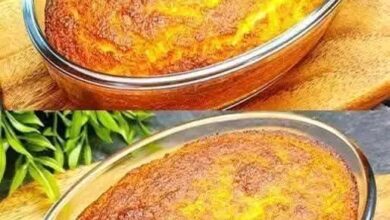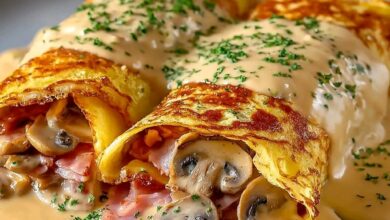Dinner in Paris “Don’t buy cheese make it yourself!”

Dinner in Paris
“Don’t buy cheese make it yourself!”
Introduction
“Dinner in Paris” is a celebration of simple elegance — a nod to the heart of French home cooking, where a few humble ingredients become something extraordinary. With just milk, vinegar, butter, salt, and herbs, you can create your own creamy, flavorful cheese reminiscent of soft French farmer’s cheese. Each bite carries the warmth of a countryside kitchen and the sophistication of a Parisian café.
Ingredients (with Quantities)
1.5 liters whole milk (6 ⅓ cups)
2 tablespoons apple cider vinegar (30 ml)
50 grams melted butter (¼ cup)
Salt, to taste (about ½ to 1 teaspoon recommended)
1 tablespoon Provençal herbs (15 g) — a blend of rosemary, thyme, oregano, basil, and lavender
Instructions
1. Heat the Milk:
Pour the milk into a large pot and slowly heat it over medium flame until it’s just about to boil (around 85–90°C / 185–194°F). Stir occasionally to prevent burning.
2. Add the Vinegar:
Once the milk is hot, remove it from heat and stir in the apple cider vinegar. You’ll see the milk begin to curdle — separating into curds (solid) and whey (liquid).
3. Let it Rest:
Let the mixture sit for 10–15 minutes to fully separate.
4. Strain the Curds:
Line a colander with cheesecloth or a clean kitchen towel, and pour the mixture through. Allow the whey to drain out for 10–15 minutes.
5. Add Flavor:
Transfer the curds to a bowl. Mix in melted butter, salt, and Provençal herbs. Stir gently until smooth and creamy.
6. Shape and Chill:
You can press the cheese into a mold for a firm texture or leave it loose for a soft, spreadable consistency. Refrigerate for at least 2 hours before serving.
Origin
Homemade vinegar cheese has ancient roots across Europe, including France, where fresh cheeses like fromage blanc and chèvre frais are everyday staples. This simple vinegar-curdled cheese embodies the French philosophy of “faire avec ce qu’on a” — making something wonderful from what you already have.
Cultural Significance
In French homes, fresh cheese is more than food; it’s tradition. Served with crusty baguettes, olives, and wine, it represents comfort, hospitality, and the art of savoring life’s simple pleasures. Your “Dinner in Paris” brings that same rustic authenticity to your kitchen — proof that elegance doesn’t require extravagance.
Description
Creamy yet light, this homemade cheese has a delicate tang balanced by the buttery richness and aromatic herbs. Its texture falls between ricotta and soft feta, and its taste carries whispers of the French countryside — fields of lavender and thyme kissed by the sun.
Optional Additions
Garlic: Add 1 clove of minced garlic for a savory kick.
Lemon Zest: For brightness and a citrus note.
Crushed Black Pepper or Chili Flakes: To add warmth.
Chopped Chives or Dill: For a fresh, garden flavor.
Tips for Success
Use whole milk, not ultra-pasteurized — it curdles best.
Don’t boil the milk; just heat until hot to touch.
The longer you drain, the firmer the cheese.
Save the whey! It’s nutritious — use it in soups, smoothies, or bread dough.
Chill the cheese for better flavor melding.
Nutritional Information (per 50 g serving, approx.)
Calories: 130 kcal
Protein: 6 g
Fat: 11 g
Carbohydrates: 2 g
Calcium: 15% DV
Sodium: depends on added salt
Conclusion
“Dinner in Paris” proves that culinary magic often starts with the simplest ingredients. With just milk and vinegar, you create something that feels luxurious and deeply satisfying — a true reflection of French kitchen artistry.
Recommendation
Serve this cheese with warm baguette slices, roasted vegetables, or as a topping for salads. Pair with a crisp white wine like Sauvignon Blanc or a light rosé for a full Parisian experience.
Embracing Healthful Indulgence
Homemade cheese offers the perfect balance of pleasure and wellness. It’s free from preservatives, customizable to your taste, and rich in natural nutrients. Embrace the joy of crafting your own food — one small act of creation that nourishes both body and soul.
Would you like me to format it like a cookbook page (with design cues, headers, and callouts), or more like a food blog post with storytelling and sensory details?



